The mystery of the missing noses
One of the most common questions that I have been asked over the years by community members is: ‘Why are the noses missing from Egyptian statues?’. I learned early on that there is a subtext to this question and that what the person is really asking is: ‘Were the noses deliberately removed in order to disguise the appearance of the people of Ancient Kemet?’.
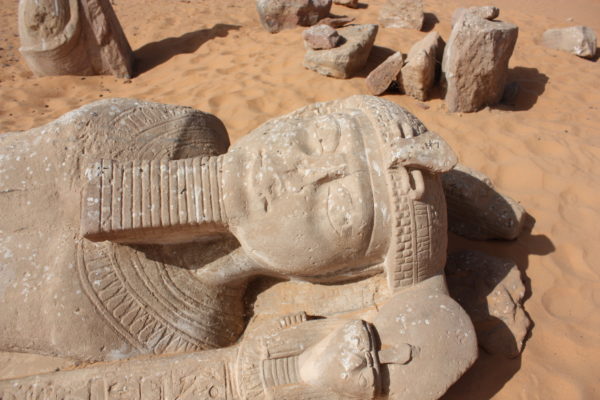
Possible reasons for damage
Before answering the question of the missing noses, it is necessary to look at all of the possible causes of damage, and there are a number of these:
- Statues were re-used in antiquity. Temples became obsolete during the later Roman period and onwards, because people changed their religion. When people wanted building materials they would simply take them from the nearest free source. A sort of recycling. There is evidence of this right through until the 20th century.
-
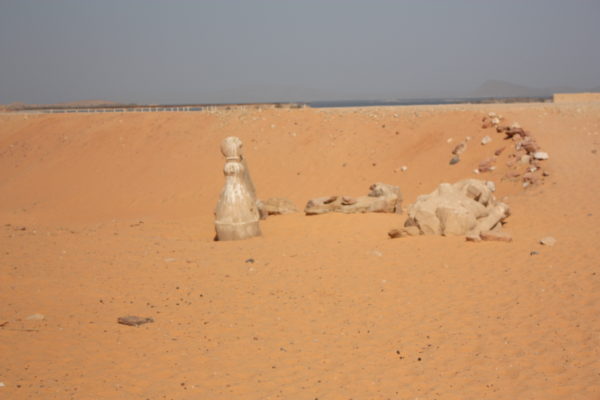
Statues covered by sand at the Temple of Rameses II in Nubia Natural erosion. Many statues were made from sandstone or limestone, both of which are soft stones that are liable to erode very easily when exposed to sand or weather conditions. You can see from the above photograph how quickly statues can be covered by sand, and sand erodes (damages) the surface. Hard stones such as granite and basalt survive much better.
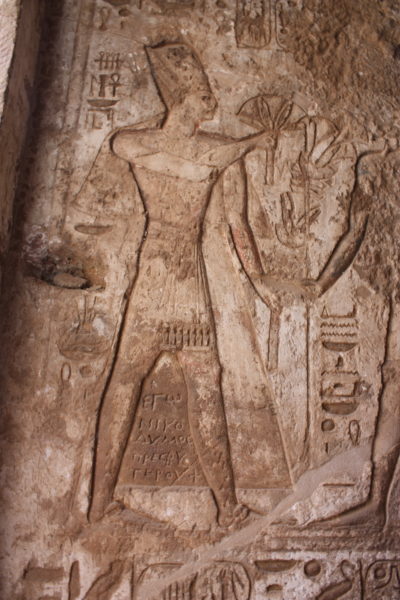
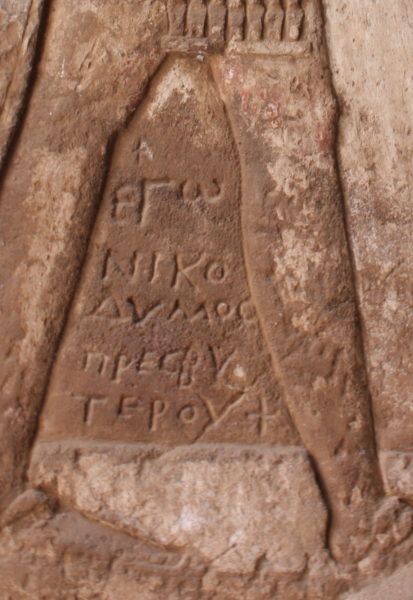
- Deliberate damage to change the appearance of the statue. Yes this did happen both soon after statues were made, often when a new ruler or dynasty came to power, and also for religious reasons. The images above show a depiction of Rameses II, who ruled Egypt from around 1279-1213 BCE (before common era and so over 3000 years ago). Between the King’s legs is a much later inscription that can be identified culturally as Coptic (Christian) by the cross. The face and eyes of the king have been chiselled away.
-
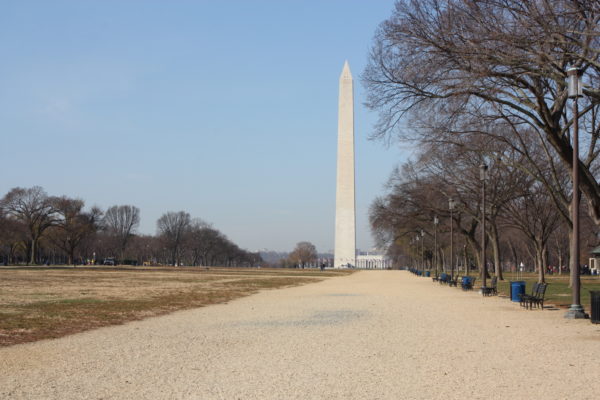
The Washington obelisk The appropriation (unauthorized theft) of Ancient Egyptian culture by non-African cultures. The Washington Monument is in the form of an ancient Egyptian obelisk and was built to commemorate George Washington. More will be written about obelisks in a future post; it is used here to illustrate how easily an Egyptian symbol can be used out of its original context and by a culture that had no direct link to the original. Many cultures that had no connection to Ancient Egypt have used Kemetic symbols for their own purposes, in order to try to connect to a powerful ancient civilisation.
How do we know who damaged the noses of statues?
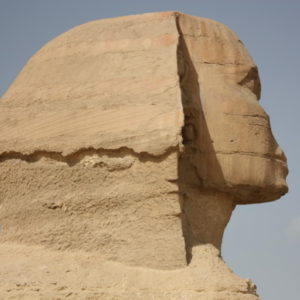
For many, we will never know. We can assume in the case of the Christian writing next to the damaged representation of Rameses II (above) that the two acts may be related.
Still on the subject of appropriation, many people have suggested that non-African cultures have been keen to disguise the African origins of Ancient Egyptian or Kemetic culture in order to claim them as their own. Stories of Napolean’s army firing at the Sphinx in Giza in order to destroy the nose have circulated for a number of years. However, I have been unable to find any documented evidence for this prior to the 20th century; and I have looked in detail.
What we do have evidence for, in the form of Arabic manuscripts, is the damage of the face of the sphinx by an 14th century extremist named Mohammed Salim al-Dahr. For further references to the original texts see: Haarmann, U., 1980. Regional sentiment in Medieval Islamic Egypt, in Bulletin of the School of Oriental and African Studies. vol. 43: 55-66.

Egyptian statues represented gods, kings, other members of the royal family or officials. When people in Egypt converted to Christianity in the form of the Coptic religion, or later Islam they no longer wished to have what they deemed to be ‘pagan’ images surrounding their new places of worship. Many of the old temple sites became churches, monasteries and later the sites of mosques, as seen in the image above at Luxor temple. As mentioned above, the new builders often re-used building materials, that to the modern observer contained beautiful images of a past culture, simply as ballast. In short they did not wish to preserve these images, and the available materials saved them time and money.
A conspiracy in Egyptology?
Yes there was, but it was not as simple as damaging the facial features on statues and reliefs to disguise their identity. There was a deliberate attempt by early Egyptologists to deny that Ancient Egypt was an African culture. It was embedded within the discipline from the start and will form the subject of my next post.
